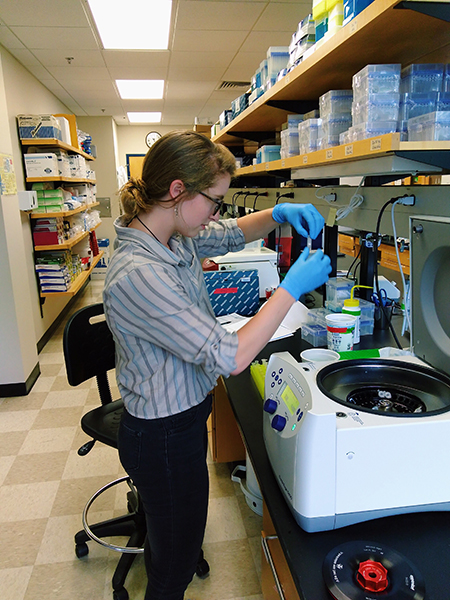Fowl Play
By Bridget Tweedie
Hey everyone! My name is Bridget Tweedie and I am a rising junior at Bates College in Lewiston, Maine. I’m a biology major with a focus in ecology and what I love most is finding the interconnectedness between organisms and ecosystems. I grew up in Maine and was drawn to the One-Health approach of the REU ANEW program in order to further explore the environment I was raised in, and to investigate the relationship between ecosystems and health.

This summer, I am working in Dr. Pauline Kamath’s Wildlife Disease Ecology Lab. Her research aims to investigate infectious disease in birds and mammals, and explores how disease spread may have greater implications for the wildlife-livestock interface. My project involves studying wild turkeys, or more specifically, how the presence of one infection may be a precursor to other infections. The disease we are looking at, called lymphoproliferative disease virus (LPDV), is a highly prevalent disease throughout Maine’s wild turkey population (>75%). Although LPDV itself is not always lethal to turkeys, we believe viral infection may increase susceptibility to other potentially pathogenic infections. Combined with the high density population of turkeys in Maine, the high prevalence of LPDV in wild turkeys has become of increasing concern in recent years. The disease has the potential to spread to other poultry and spill over into other game bird populations, such as quail or pheasants, or more relevant to agricultural and public health concern, into domestic livestock populations. Spillover into domestic livestock could have major consequences on the health of poultry and, as a result, the livestock economy within Maine. For these reasons, our research seeks to serve as a possible means of preventing disease spread while also maintaining animal health.
There have been only a handful of research papers about LPDV within the last several years. The disease was found for the first time in a wild turkey in 2009. Therefore, there is still little information known about the virus and how it may affect an infected individual. This in itself has proven to be a challenge thus far. Without knowing how it is transmitted or why only some of the infected birds actually get sick, it can be difficult to know where to start when designing a research experiment. More than that, once we began our experiment, designing our protocols for each disease has been somewhat of a learning by trial and error experience, which can be both frustrating and exciting. Perhaps, though, that’s the best part of being a scientist. Having a challenge and being able to collaborate with my mentor and her students to do something that has never before been done has been an exciting and extremely valuable experience thus far. I’ve learned that research is all about adapting to new challenges and thinking in dynamic ways, and this program has fostered a confidence and drive within me to pursue these unanswered questions without hesitation. I have never felt more like a true scientist, and I can’t wait to explore what challenges I have next.
This blog post was authored by a student participating in the Research Experience for Undergraduates – Accelerating New Environmental Workskills program, which is led by faculty in the Initiative for One Health and the Environmental and funded by the National Science Foundation. Information in this post does not represent the University of Maine or its faculty.
